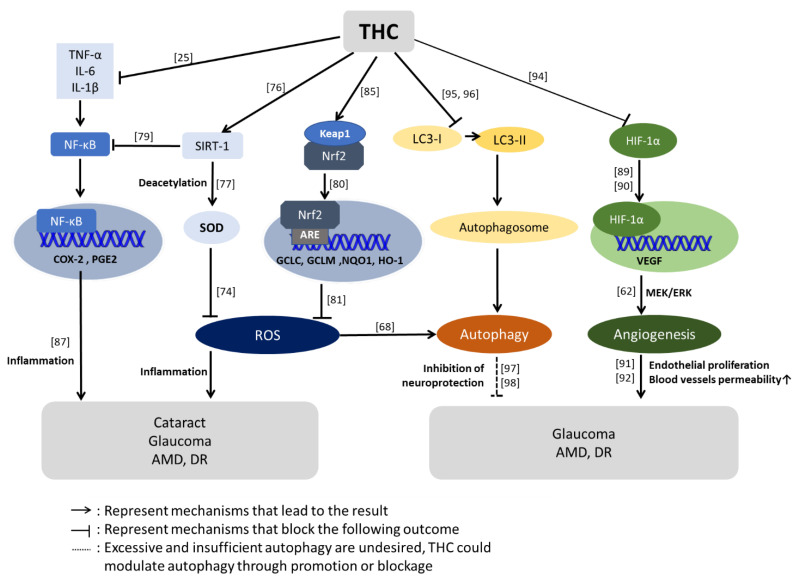Figure 4.
Possible pathways of THC-mediated protective effect on eye diseases. Regarding antioxidative stress pathways, the activation of sirtuin-1 (SIRT-1) was increased after THC treatment. SIRT-1 deacetylates SOD-1 and SOD-2 are ROS (reactive oxygen species) scavengers. However, SIRT-1 also inhibits nuclear factor-κB (NF-κB), leading to the alleviation of inflammation and oxidative stress. In addition to the SIRT-1 pathways, THC can activate antioxidative stress genes, such as heme oxygenase-1 (HO-1), by occupying the Nrf2-binding site of Keap1. Regarding the modulation of autophagy, THC balances excess and deficient autophagy. About the effect of THC against angiogenesis, THC downregulates the expression of hypoxia-inducible factor-1α (HIF-1α) and vascular endothelial growth factor (VEGF). As noted, because of the collective antioxidative, anti-inflammatory, and antiautophagic effects of THC and its ability to inhibit VEGF, THC plays a neuroprotective role. These THC pathways were observed in different experiments but may have valuable benefits in protecting the eye. Abbreviations: SOD: superoxide dismutase, Nrf2: nuclear factor erythroid 2-related factor 2. The different numbers in the figures are reference citations.

